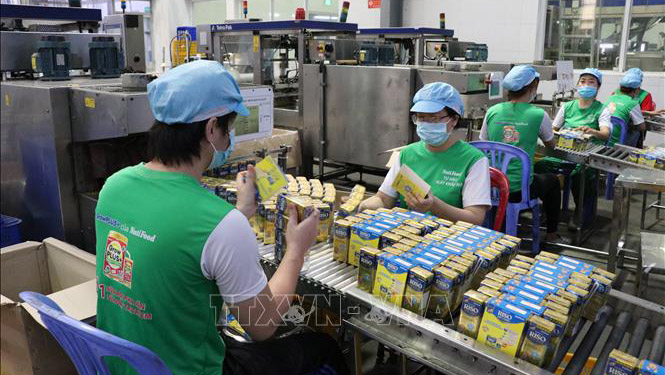HCMC – Vietnam’s manufacturing sector has continued to struggle, with the S&P Global Vietnam Manufacturing Purchasing Managers’ Index (PMI) remaining below the no-change mark for the fourth consecutive month.
With a reading of 46.2, up from 45.3 in May, the index shows a significant decline in operating conditions. Market conditions have worsened, leading to new orders dropping.
Total new business has declined for the fourth consecutive month, although at a slower rate than in May. Notably, new export orders have slid more rapidly than total new business, reflecting low demand in international markets.
Manufacturers in Vietnam have faced challenges due to weak market demand in the second quarter. Output and new orders have plunged, partly due to power outages caused by a heatwave in northern Vietnam.
Power outages and weak demand have further struck manufacturing production. Backlogs of work have edged down, resulting in lower employment and purchasing activity.
“The latest S&P Global Vietnam Manufacturing PMI presents a gloomy outlook for the sector at the end of the second quarter, with a lack of demand being the primary issue for firms,” said Andrew Harker, economics director at S&P Global Market Intelligence.
“We are now witnessing sustained reductions in output, new orders, employment, and inventories as a result. Power outages in Vietnam caused by the heatwave have compounded firms’ problems.”
Input costs and output prices have inched down, enabling firms to adjust prices to stimulate demand. Suppliers’ delivery times have significantly shortened, indicating surplus capacity in supply chains.
Business confidence remains relatively low, but manufacturers are optimistic about future output growth, hoping for a recovery in market demand and the acquisition of new customers.
Although there has been a slight improvement since the low point in May, business confidence continues to remain subdued. Nonetheless, manufacturers are optimistic about future output growth and anticipate a recovery in market demand, which is expected to attract new customers in the coming year.
In June, market prices decreased and supplier delivery times improved. While these changes were necessary, they may not be seen as positive as they were a result of decreased demand. To revitalize the manufacturing sector, a boost in demand is necessary, and global manufacturing trends should be closely monitored for any signs of improvement, added Harker.









